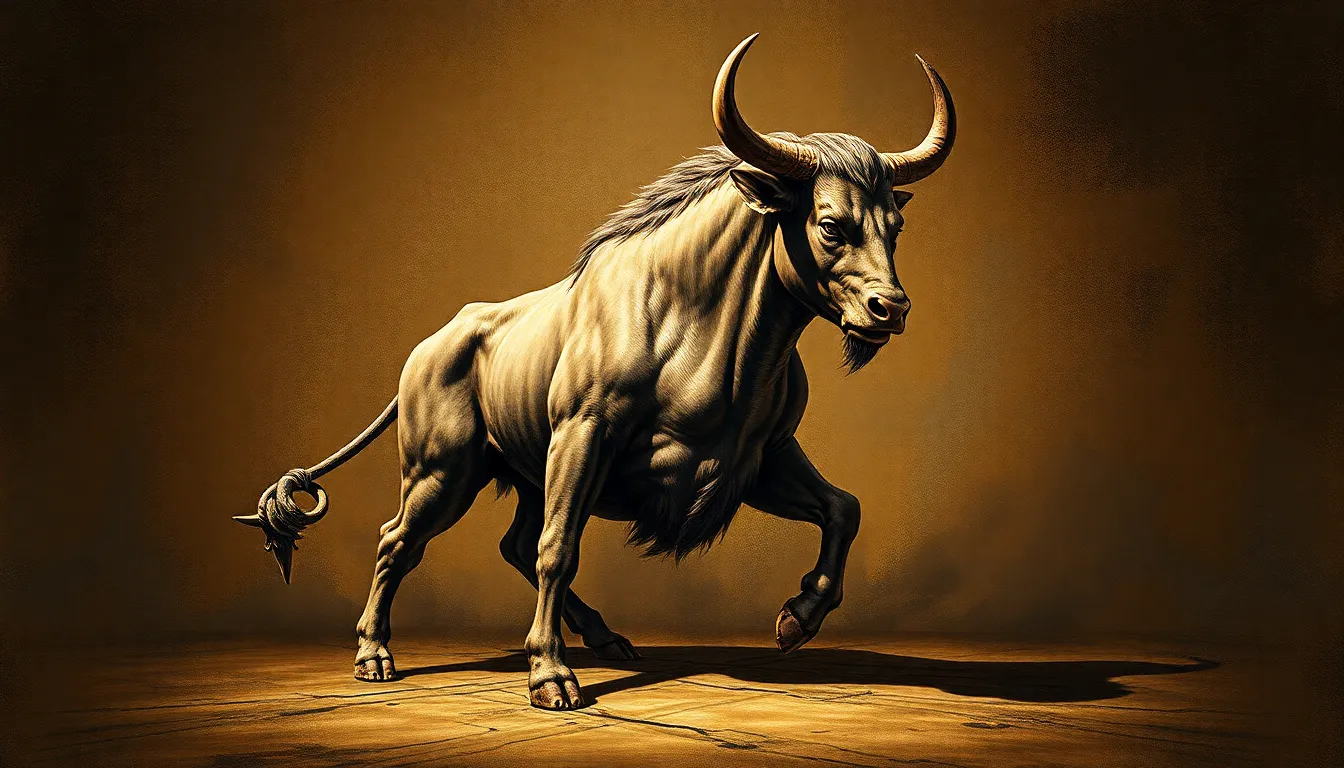The Minotaur: Understanding Its Psychological Archetype
I. Introduction
The Minotaur is one of the most captivating figures in Greek mythology, a creature that embodies both the monstrous and the human. This hybrid being, with the body of a man and the head of a bull, represents the complex nature of humanity and the depths of the unconscious mind. The myth of the Minotaur serves not only as a story of horror and intrigue but also as a profound metaphor for psychological exploration.
In psychology, archetypes are fundamental, universal symbols and motifs that shape human experiences. They help us understand our behaviors, thoughts, and relationships. This article aims to explore the Minotaur as a psychological archetype, delving into its origins, symbolism, and relevance in modern psychological practice.
II. The Origin of the Minotaur Myth
The Minotaur myth originates from ancient Crete, deeply intertwined with the story of King Minos and the goddess Pasiphaë. According to legend, Pasiphaë was cursed to fall in love with a majestic bull sent by Poseidon. The offspring of this unnatural union was the Minotaur, a creature that could not be accepted in the human world.
Key figures in the myth include:
- King Minos: The ruler of Crete who ordered the construction of the labyrinth.
- Theseus: The hero who ultimately confronts the Minotaur and seeks to end the terror it brings.
- Ariadne: The daughter of Minos who aids Theseus by providing him with a thread to navigate the labyrinth.
The labyrinth itself, designed by Daedalus, is a crucial symbol in the myth. It represents the complexity of the human psyche and the intricate pathways of our inner conflicts. By navigating the labyrinth, one must confront the Minotaur, symbolizing the deeper fears and desires hidden within.
III. The Minotaur as a Symbol of the Unconscious
The Minotaur exemplifies the duality of human nature, embodying both beastly instincts and human rationality. This duality illustrates the struggle we face between our primal urges and the constraints of society. The Minotaur represents:
- Repressed Desires: The Minotaur can be seen as a manifestation of what we suppress, whether it be anger, lust, or other primal emotions.
- Fears: As a monstrous figure, the Minotaur represents the fears we avoid confronting, lurking within the labyrinth of our minds.
Carl Jung’s concept of the shadow is relevant here; the Minotaur symbolizes the aspects of ourselves we deny or hide. To confront the Minotaur is to face our shadow, acknowledging the darker parts of our psyche that we often ignore.
IV. The Labyrinth: Navigating Inner Conflicts
The labyrinth serves as a powerful metaphor for the complexities of the human psyche. It embodies the intricate paths we navigate in our quest for self-discovery. The journey through the labyrinth is not merely a physical challenge; it represents:
- Self-Discovery: Each turn in the labyrinth presents an opportunity to learn about oneself.
- Confrontation: The ultimate goal is to confront the Minotaur, symbolizing the need to face our inner demons.
The role of the hero, traditionally represented by Theseus, is crucial in this context. He embodies courage and determination, qualities necessary to confront inner fears and emerge transformed. His journey illustrates that facing the Minotaur leads to personal growth and understanding.
V. The Minotaur in Modern Psychology
In contemporary psychology, the Minotaur archetype continues to resonate. Therapists often reference it when discussing the internal struggles individuals face. Case studies reveal how people grapple with their inner Minotaurs, battling repressed emotions and fears. Some common therapeutic approaches include:
- Psychodynamic Therapy: This approach focuses on bringing unconscious conflicts to light, encouraging individuals to confront their inner Minotaurs.
- Art Therapy: Through creative expression, individuals can explore their emotions and confront their fears, visualizing their Minotaurs in a safe space.
Integrating the Minotaur archetype into therapy allows individuals to understand and embrace their shadow selves, promoting healing and personal growth.
VI. Cultural Representations of the Minotaur
The Minotaur has left a lasting impact on literature, art, and popular culture. Its representation varies widely, showcasing the creature’s adaptability as a symbol. Some notable examples include:
- Literature: The Minotaur appears in works such as “The Myth of Theseus and the Minotaur” by various authors, exploring themes of heroism and the human condition.
- Art: Artists like Pablo Picasso have depicted the Minotaur in various forms, often highlighting the duality of man and beast.
- Popular Culture: The Minotaur has been featured in movies, video games, and television series, often as a metaphor for inner conflict and struggle.
These representations demonstrate how the Minotaur continues to resonate with audiences, symbolizing the eternal battle between our civilized selves and our primal instincts.
VII. Lessons from the Minotaur Archetype
The Minotaur archetype teaches valuable lessons about the human experience:
- Embracing the Shadow Self: Understanding and accepting our darker aspects can lead to greater self-awareness.
- Confronting Fears: Facing our fears, much like Theseus confronting the Minotaur, is crucial for personal growth and transformation.
- Balancing Instincts: Recognizing the importance of primal instincts while maintaining societal norms is essential for a fulfilling life.
These lessons encourage individuals to embark on their personal journeys, navigating their own labyrinths and confronting their inner Minotaurs.
VIII. Conclusion
The Minotaur serves as a significant psychological archetype that illuminates the complexities of the human psyche. By understanding this mythological figure, we gain insights into our own inner struggles and the importance of self-acceptance. As we navigate our personal labyrinths, we are encouraged to confront our fears and embrace our shadow selves, ultimately leading to a more integrated and authentic existence.
In conclusion, the journey to self-acceptance is often fraught with challenges, but by exploring our inner Minotaurs, we can achieve profound personal growth and understanding. Embrace your labyrinth, for within it lies the key to unlocking your true self.




